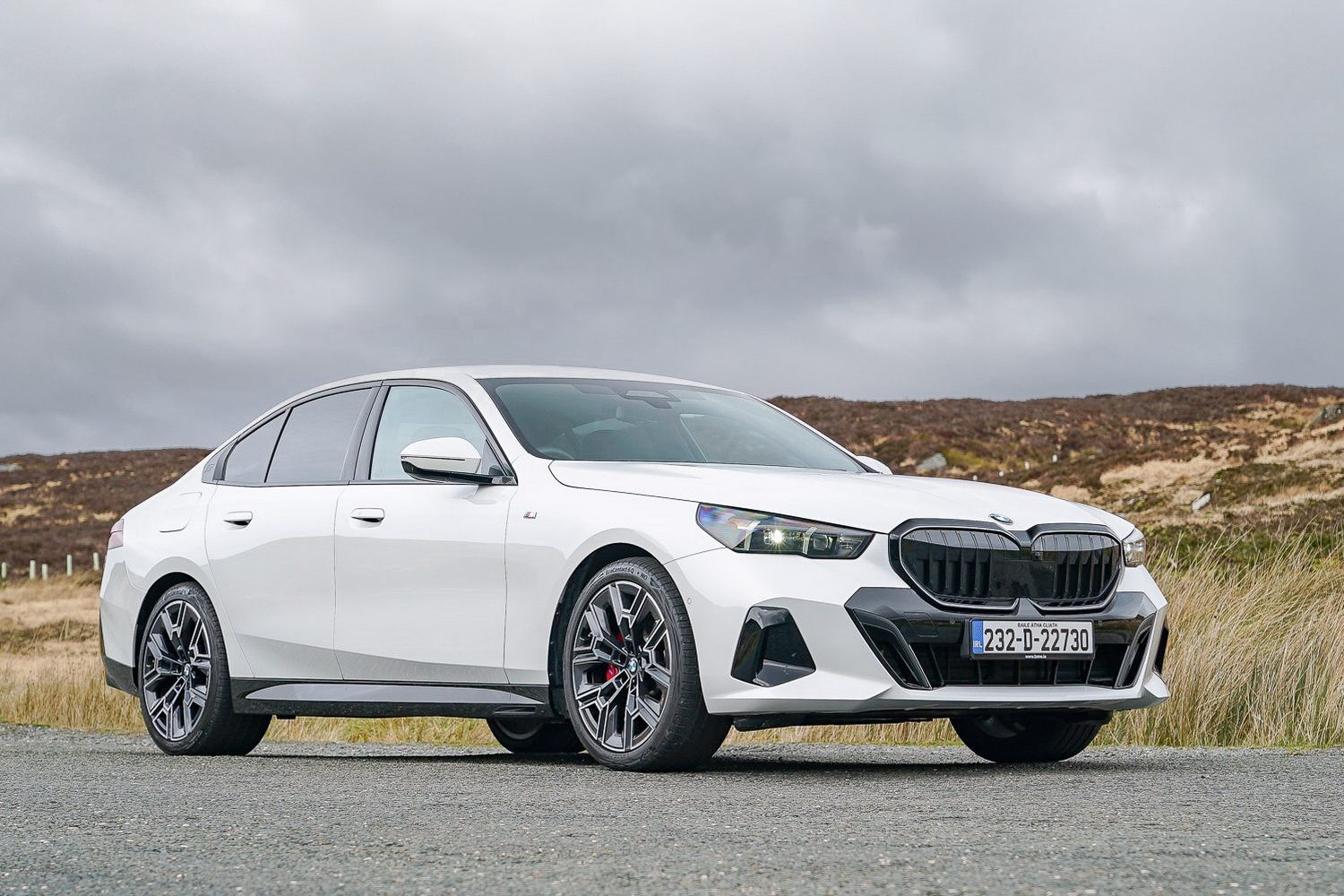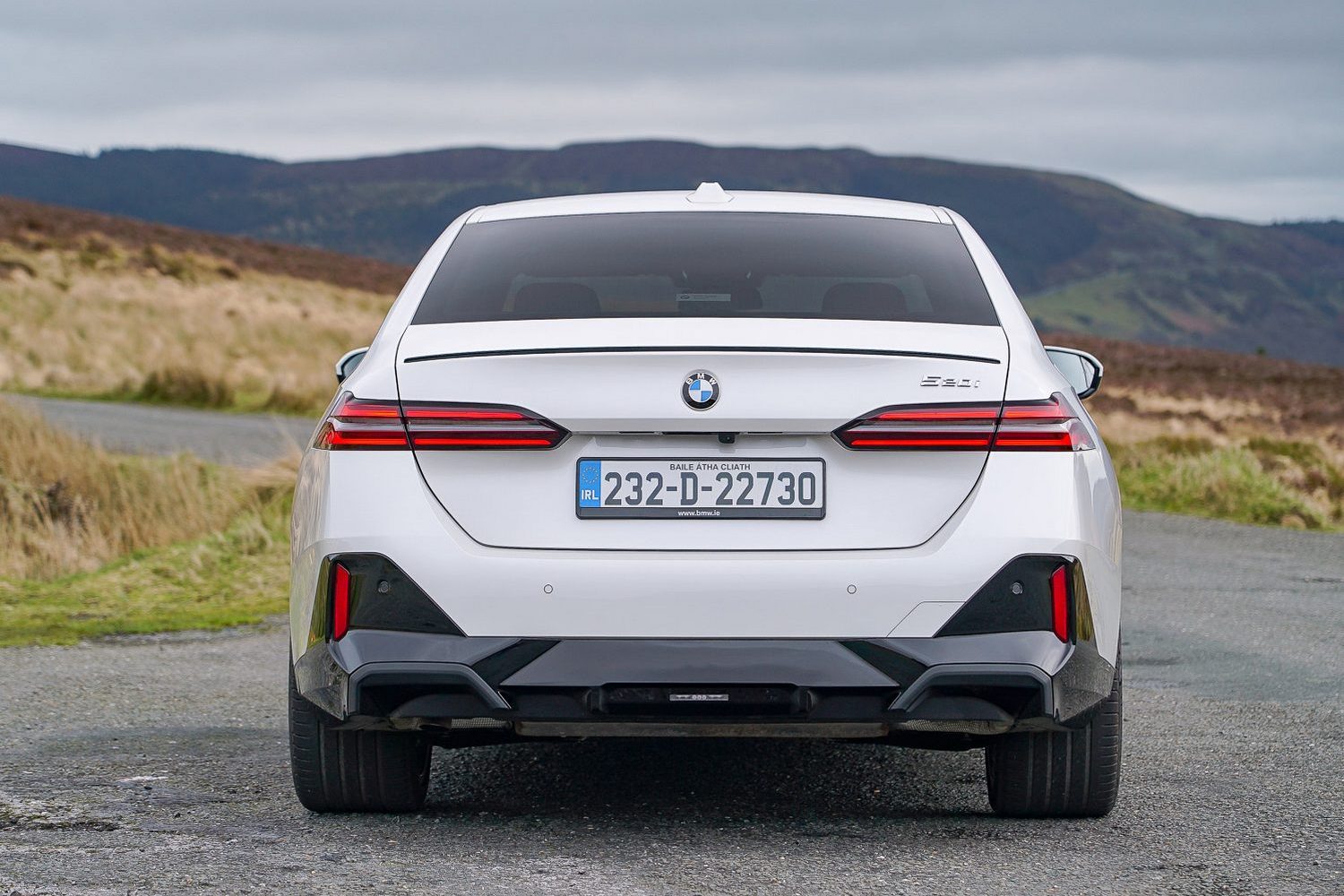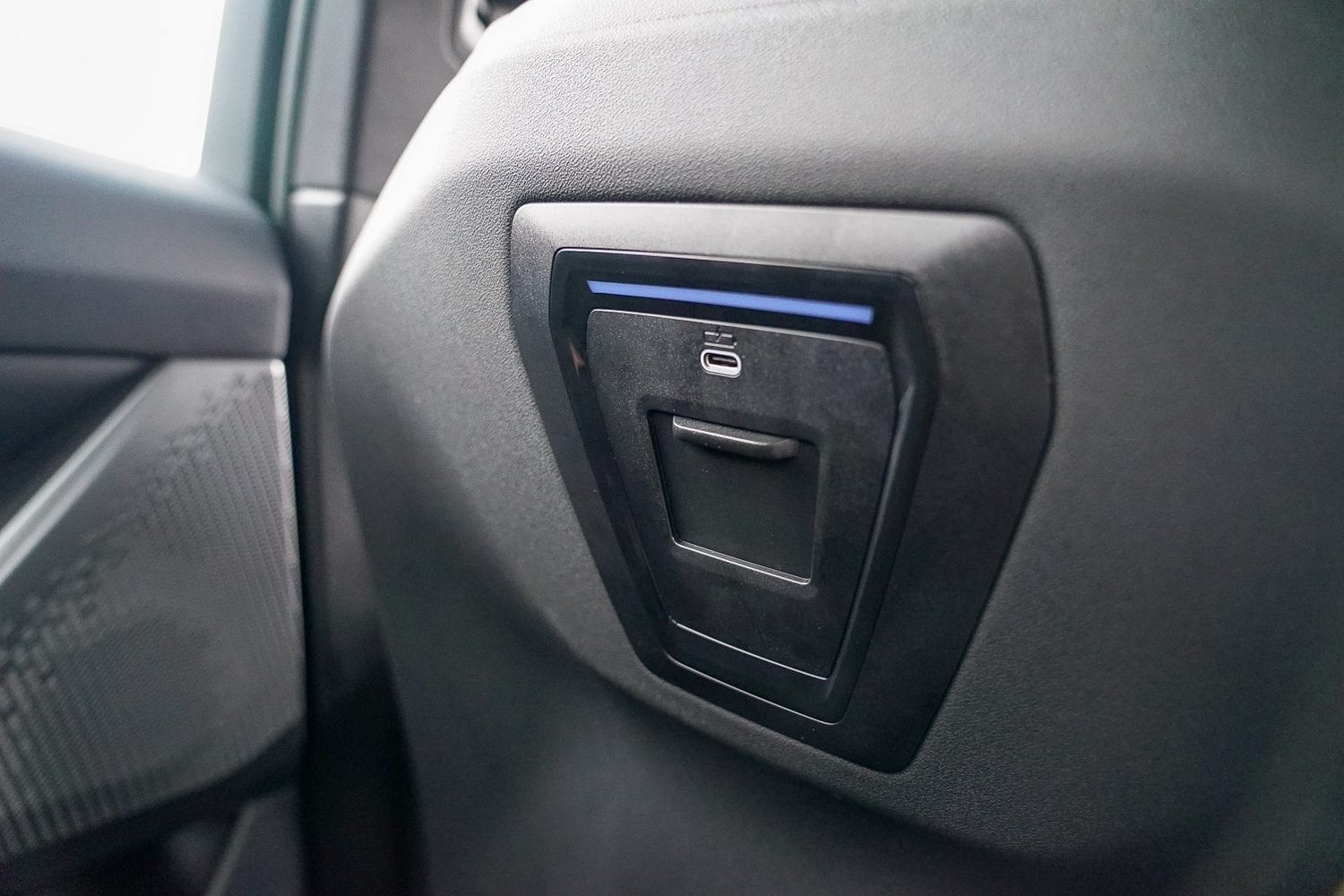BMW 520i overview
The arrival of the eighth-generation BMW 5 Series (or the G60 if you’re familiar with BMW in-house model codes) marks a significant change in trajectory for this executive saloon. Until now, the big seller of the range has been the diesel-powered 520d, which in its last incarnation delivered a tempting mix of performance and efficiency. We’re not just saying that from our reviewing perspective, because buyers felt the same, with the 520d being the most popular variant of the 5 Series to be sold in Ireland.
But this time around, there’s no 520d to be found. That’s because BMW is focusing on electrification instead, not only with an evolution of the previous-generation plug-in hybrid, but also with the all-electric i5. However, the latter is expensive - starting from €83,215 - while not everybody is able to plug into a socket to take advantage of the all-electric drive that’s possible with the PHEV.

So past 520d buyers after a more conventional executive saloon are left with the car tested here, the petrol-powered 520i.
As with past generations, the BMW 5 Series has rivals in the shape of the Mercedes E-Class (which has also just launched as a new-generation model) and Audi A6, although the latter will be replaced by an all-new car later this year. Elsewhere, there’s the Lexus ES hybrid and lower-spec versions of the Porsche Panamera, but cars such as the Volvo S90 and Jaguar XF are no longer sold here. All-electric options are starting to fill the void, because as well as the i5, there’s the Mercedes EQE to consider.
The BMW 5 Series model range

The 5 Series starts from €70,845, which gets you behind the wheel of the 520i tested here, with M Sport as the entry point to the range. There was a time when M Sport was the range-topper, but with so many buyers aspiring to it, BMW has now made it the default choice. For €4,200 extra you can move up to M Sport Pro, which adds bigger wheels and more kit, but those are the only versions of the 520i available.
Both models come with a 2.0-litre twin-turbocharged four-cylinder petrol engine that makes up to 208hp and 330Nm of torque, while a mild-hybrid system boosts efficiency. Rear-wheel drive is the only option available, and an eight-speed automatic gearbox is fitted as standard, while a 0-100km/h time of 7.5 seconds is quoted.
If a PHEV fits into your life, then there are two powertrain options to choose from. The 530e comes with the same 2.0-litre petrol engine, eight-speed auto and rear-wheel-drive configuration as the 520i but adds a powerful electric motor for a combined 299hp maximum output and a 0-100km/h time of 6.8 seconds, while a 22kWh battery gives it an official electric range of 99km.
The 550e features the same 22kWh battery as the 530e, but it’s connected to an in-line six-cylinder turbocharged petrol engine instead, while xDrive four-wheel drive is also fitted as standard. The powertrain makes up to 489hp, so the 550e has a 0-100km/h time of 4.3 seconds, while the all-electric range is reduced slightly to 89km. Both the 530e and 550e are available in M Sport and M Sport Pro trims, with prices ranging from €73,105 to €97,905.
Standard equipment is generous, with 19-inch alloy wheels, LED lights front and rear with adaptive main beam, two-zone climate control, BMW’s latest curved display running its Operating System 8.5 with built-in navigation and online services, a Harman Kardon sound system, front and rear park assist with a rear camera, heated front sports seats finished in synthetic leather and Alcantara, smartphone integration and wireless charging.

Move to the Pro package, and 20-inch alloys are added, as is darker exterior trim and the Technology Pack, which adds a more advanced park assist system, an interior camera, head-up display and live services with voice control.
As usual, there are plenty of option packs that can bump the price up even further. Our car featured the Technology Plus Pack, a €4,619 option that adds comfort access (electrically sliding seats that move back and forth to make getting in and out easier) and enhanced driving assistance systems. The €2,279 Comfort Pack adds an electric boot lid, heated steering wheel and extra comfort items.
Moving to the i5, this comes in eDrive40 guise to start with, from €83,215 for the entry level Sport Edition version. There’s a jump to €91,105 for M Sport trim, while M Sport Pro is €3,690 extra. The rear-mounted electric motor produces up to 340hp and 0-100km/h takes six seconds exactly, while BMW quotes a range of up to 575km from a full charged 81kWh battery.
The current range-topping M-badged model is the electric i5 M60. This starts from €120,205 and features a 601hp four-wheel-drive powertrain that delivers a 0-100km/h time of 3.8 seconds. The battery is the same size as the eDrive40’s, though with a shorter official range of up to 508km.
As well as the standard four-door saloon, the 5 Series and i5 will also come in more versatile Touring estate guises, and a new M5 super saloon (and estate) is also on the way with a hybrid powertrain, although BMW hasn’t confirmed exactly what form this will take.
The BMW 5 Series interior

In many ways, the 5 Series is turning more into a shrunken 7 Series than ever, especially inside. The cabin oozes quality, while the large, curved display up front offers a minimalist look, thanks to the lack of physical controls that are used - though as ever we’d prefer actual buttons and knobs to control the air conditioning. The large 14.9-inch touchscreen operates most things, while its integration with the 12.3-inch driver’s instruments makes it look like one large display.
There’s LED ambient lighting in the dashboard and doors that add a classy look, while the M Sport trim means you get a too-thick flat-bottomed steering wheel (BMW has finally, unfortunately, succumbed to market pressure on that score), and the seatbelts pay homage to BMW’s Motorsport division (after which M Sport is named) with triple racing stripes.
Unlike some recent BMWs the 5 Series retains a rotary control wheel on the centre console, so you have different options when it comes to controlling the main screen, including voice inputs.
In the back, there’s space for three across the rear bench, although the outer seats are sculpted, so the middle seat is more like a perch, really only for shorter journeys. Rear foot space in the middle is taken up by the car’s transmission tunnel, too, which is always going to be an issue with a front-engined, rear-wheel-drive car.

At the very back, the optional (and we think largely pointless) powered boot lid opens to reveal 520 litres of space - or rather, it does in the petrol and PHEV models, while the i5 swallows 30 litres less.
The BMW 520i driving experience
As already mentioned, since the 520i is the entry point to the 5 Series line-up, it’s the least powerful model in the range. However, with 208hp on offer and maximum torque of 330Nm available from 1,500rpm, it’s a decent performer. There’s a 0-100km/h time of 7.5 seconds, while the eight-speed automatic gearbox offers smooth shifts. It has ample performance for everyday driving and it’s a quiet and smooth engine.
From launch there’s no mention of xDrive four-wheel drive for the 520i, so you just have the standard car’s rear-wheel drive chassis to exploit. And it’s all the better for that. The 520i weighs 1,800kg, so it’s not as hefty as the plug-in hybrid models or the electric i5, and this is to the benefit of handling. Indeed, this is the ‘purest’ example of the new 5 Series that we’ve tried in terms of weight and chassis technology and it still has some of the old BMW magic in the way it tackles an interesting road with uncorrupted steering and great balance at all times.

Good long-distance ride comfort is mixed with iron-fisted body control, though you could enhance the comfort further if you stick to smaller wheels of course. And on that subject, we really wish BMW would trim some fat out of its thick-rimmed steering wheels.
In terms of efficiency, it’s not difficult to keep the 520i to 6.0 litres/100km in everyday driving, and it’ll better that on a restrained cruise using cruise control.
Our verdict on the BMW 520i

While we - and thousands of previous BMW 520d owners - believe BMW Ireland should have continued with a diesel version of the 5 Series for a few more years, the 520i turns out to be a good alternative. It’s perhaps not quite as efficient over a long journey as the best diesel-engined model BMW could make, but the 520i counters with its pricing and relative simplicity, plus the smoothness of petrol power. It’s worth trying out before you abandon BMW for a rival brand that still offers diesel options.




























